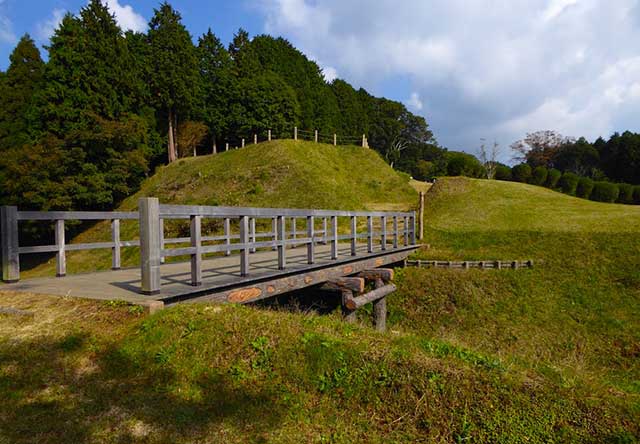
Yamanaka Castle, established by Hojo Ujiyasu in the 1560s, is located in what is now eastern Mishima, Shizuoka Prefecture. This castle served as the first line of western defense for the main Hojo Castle at Odawara. Carved into the side of a 586-meter-high mountain, Yamanaka Castle was strategically positioned along the Tokaido Highway, offering superb views of nearby Mt. Fuji, the ocean, and the road leading to Odawara.
The castle featured five baileys: the Honmaru, Ni-no-Maru, Kita-no-Maru, Nishi-no-Maru, and the Daisaki-de-Maru. These compounds were fortified with well-defended gates, log palisades, and wooden walls equipped with gun and arrow slits. Intricately designed dry moats and steep slopes further protected the castle. Notably, Yamanaka Castle’s unique Shoji-bori and Une-bori moats, which are waffle-shaped with narrow ridges surrounding square depressions, can still be seen and appreciated today. These dry moats were necessary as sourcing and maintaining water at the top of the mountain was impractical.
In 1587, as Toyotomi Hideyoshi neared the complete unification of Japan, he set his sights on the Hojo clan, who had not yet submitted to his rule. As he raised large armies against them, the Hojo fortified their smaller outlying castles, including Yamanaka, which was commanded by Hojo Ujikatsu and supported by around 4,000 samurai. However, these fortifications were incomplete when Hideyoshi made his move in 1590. The Toyotomi army, numbering around 67,000, vastly outnumbered the Hojo defenders at a ratio of 16 to 1. Despite this, the Hojo troops fought valiantly, inflicting heavy losses on the Toyotomi forces. The battle, which lasted barely half a day, or according to some accounts, as little as two hours, ended in the deaths of most defenders and the destruction of the castle. Hojo Ujikatsu and his top generals fled to assist in the defense of Odawara Castle. This battle marked the first skirmish in the Siege of Odawara, leading to the downfall of the Hojo clan.
Declared a National Historic Site in 1934, Yamanaka Castle had reverted to forest, prompting preservation projects to restore its remains. Although no structures remain, the distinctive Shoji-bori and Une-bori moat systems are still visible and appreciated. These moats, with their narrow ridges, ensured attackers could only cross in single file, making them easy targets for defenders. The ridges likely featured wooden spikes and tied ropes to further hinder attackers. In 2006, Yamanaka Castle was listed among the Top 100 Castles of Japan.
See also
-
Marugame Castle
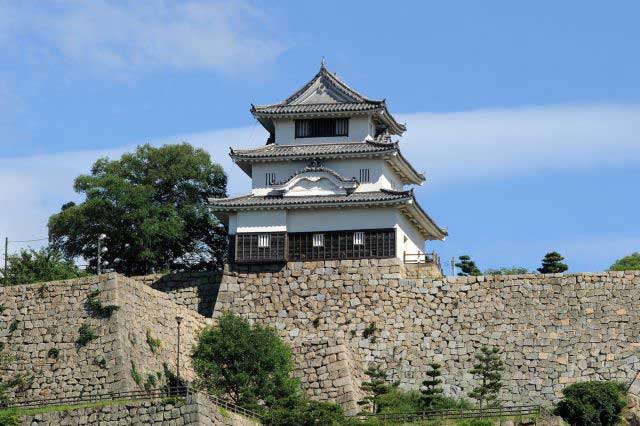
Marugame is part of the so-called “Authentic Dozen,” a group of twelve castles whose donjons have survived to the present day without major reconstructions since the Edo period.
-
Iyo Matsuyama Castle
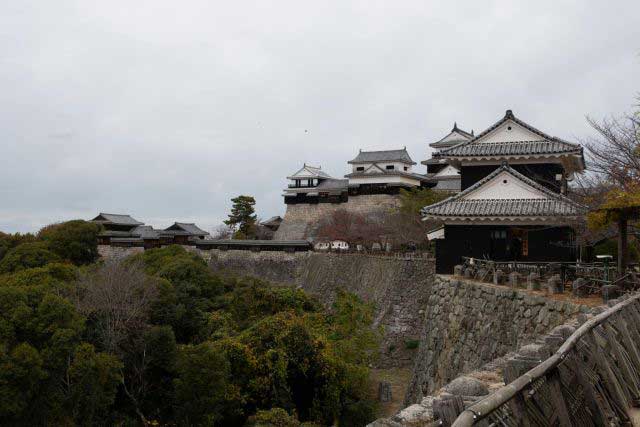
Historically, the center of Iyo Province—corresponding to today’s Ehime Prefecture on the island of Shikoku—was the city of Imabari, while the Matsuyama area was regarded as an agricultural hinterland with broad plains and low hills. During the Muromachi period, the central part of the province was governed by the Kano clan from Yuzuki Castle. With the onset of the Sengoku period, however, this clan lost its former influence and was forced to survive in the shadow of the more powerful Mori and Chōsokabe clans. After Toyotomi Hideyoshi’s forces conquered Shikoku in 1587, the northern part of Iyo Province was granted to Fukushima Masanori, one of the so-called “Seven Spears of Shizugatake.” In 1595, Masanori was transferred to Kiyosu Castle, and the lands around Matsuyama were given to another of the Seven Spears, Katō Yoshiaki, who received Masaki Castle and an income of 60,000 koku of rice.
-
Kanazawa Castle
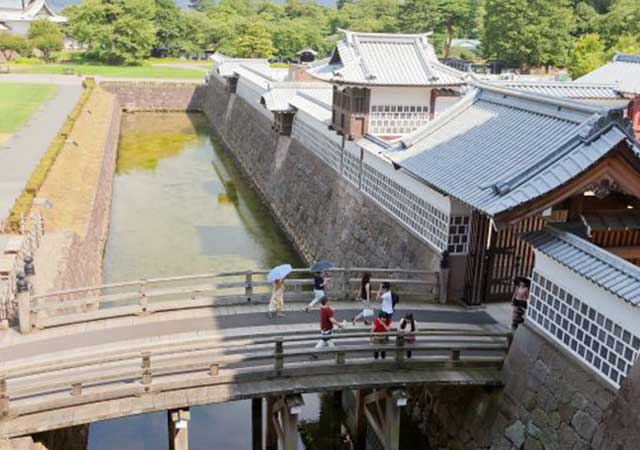
Construction of Kanazawa Castle began in 1580 on the orders of Sakuma Morimasa, a vassal of Oda Nobunaga. The castle was built on the site of the Ikko-ikki sect's Oyama Gobo temple, which is why it is sometimes called Oyama Castle. Morimasa managed to build several moats and begin construction of a castle town. However, after his defeat at the Battle of Shizugatake in 1583, he was executed, and ownership of the castle passed to Maeda Toshiie (1538–1599).
-
Nakatsu Castle
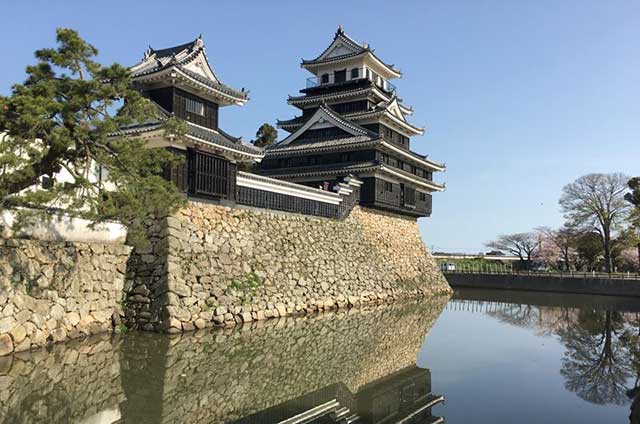
Kuroda Yoshitaka (1546–1604) was one of the closest advisors to the legendary military commander Toyotomi Hideyoshi. He took part in key military campaigns of the late 16th century, including the campaign against Shikoku in 1585 and the campaign against Kyushu in 1587. Later, during the second campaign in Korea, Yoshitaka served as chief advisor to the commander of the invasion forces, Kobayakawa Hideaki. After Hideyoshi's death, he swore allegiance to Tokugawa Ieyasu, thereby securing his influence and patronage under Japan's new leader.
-
Edo Castle
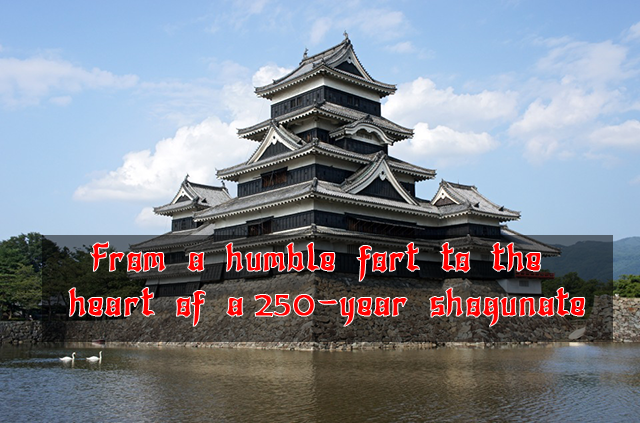
The history of Edo Castle dates back to the Heian period, when the Edo clan built a small fort on this site. In 1457, the vassal of the Uesugi clan, Ota Dokan (1432–1486), constructed a full-scale castle here. Internal conflicts weakened the Uesugi clan, and in 1524, Ota Dokan’s grandson, Ota Yasutaka, surrendered the castle without resistance to the forces of Hojo Soun, the ambitious leader of the Hojo clan. While Odawara Castle remained the clan's main stronghold, Edo was considered a key strategic fortress.
-
Samurai Museum Shinjuku
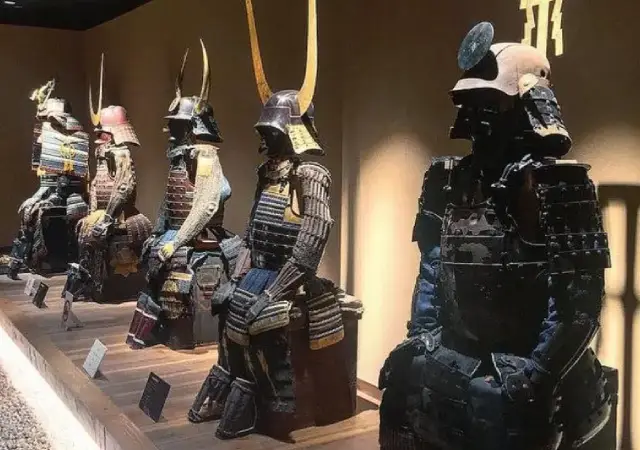
Situated in the vibrant district of Shinjuku, the museum showcases an extensive collection of samurai armor, weapons, and cultural artifacts spanning from the Kamakura to the Edo period. The exhibits aim to convey the samurai's unwavering commitment to honor and discipline, reflecting how their spirit continues to influence modern Japanese culture.
-
Anjo Castle

Anjo Castle was built on a slight elevation at the edge of the Hekikai Plateau, about 2 kilometers southeast of present-day central Anjo City in Aichi Prefecture. Today, the surrounding area thrives on large-scale agriculture and automotive manufacturing, utilizing the expansive flatlands and its proximity to the Nagoya region.
-
Numata Castle
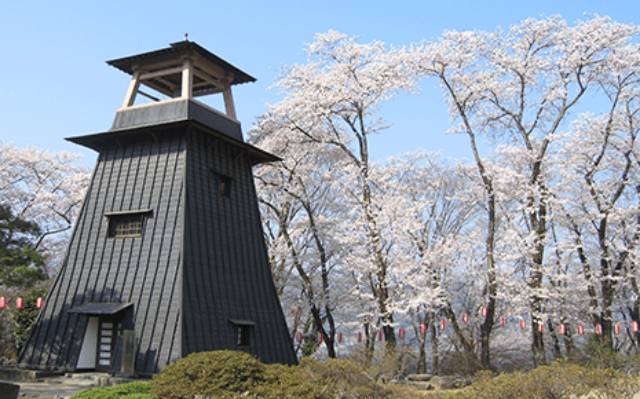
Numata Castle, located in Numata, northern Gunma Prefecture, Japan, has a rich and complex history. During the late Edo period, it served as the residence of the Toki clan, who ruled the Numata Domain. Over the centuries, the castle changed hands multiple times and was the site of significant battles during the Sengoku period.

